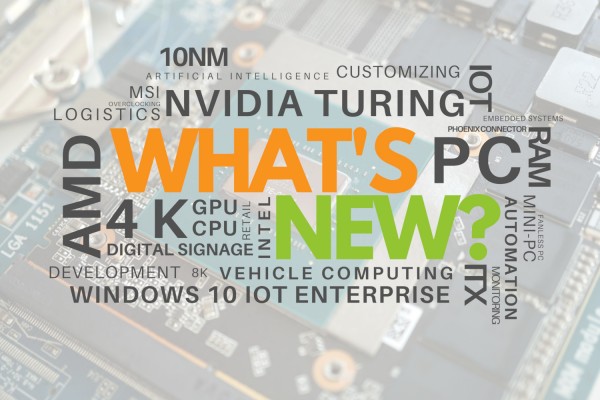Waiting is over: Intel’s 10nm chips are coming
After years of delay, Intel has finally started the production of 10 nanometre processors. The first Ice Lake CPUs are going to be installed in notebooks and will go on sale in the fall of 2019. What are the new processors capable of? In contrast to chips from 14nm production, they are on the one hand more energy-efficient, but at the same time considerably more powerful. This includes better graphics, WiFi 6 support, the ability to connect four Thunderbolt 3 ports and a built-in AI. The CPUs that have already been produced belong to the U and Y series. But Intel makes it a bit more complicated and doesn’t name them clearly anymore. More about this can be found at Tom's Hardware. Incidentally, Intel is already planning 7nm chips, which should come out in 2021.
Sources: wired.com, intel.de, heise.de.
Success for AMD Ryzen: Higher demand than expected
AMD’s current business figures are impressive. The Ryzen 3000 CPUs, which were launched in early July for the desktop segment, have started successfully. Not least thanks to their good performance and low power consumption. However, the demand for the processors Ryzen 9 3900X and Ryzen 7 3800X is so high that they currently have a limited availability. AMD stated that they did not expect such success. A subsequent delivery should be made shortly. Furthermore, AMD announced that a high-end graphics chip based on the RDNA architecture (this includes the current "Navi" chips) is currently being developed, and that mobile CPUs from 7 nanometre production will also be released soon.
Sources: PCWorld, PC Games Hardware, Gamestar.
Moon landing proved: Raytracing with Nvidia Turing
To show the possibilities of the new Turing graphics cards, Nvidia has come up with something special. The 2014 demo video of the moon landing, with which Nvidia already wanted to prove that the mission of the Apollo 11 really took place, was expanded with Raytracing and now also shows how the light conditions actually were at the time of the moon landing. The graphics card manufacturer has examined various details, such as the material of the spacesuits and the dust on the lunar surface. For the video, several millions of virtual solar rays, which are reflected by the moon and cast shadows, were calculated by Raytracing.
Sources: Techcrunch.com, golem.de, Computerbase.de.
More acceptance for the Internet of Things: The Microsoft IoT Signals Report
In their IoT Signals research Report, Microsoft gives us a large overview of the distribution of the Internet of Things. More than 3,000 decision makers around the world were interviewed and the results speak for themselves: Of the 85 percent of respondents who already carry out their own IoT projects, 88 percent consider them crucial to the success of their business. However, 97 percent of respondents expressed security concerns. Further challenges are the complexity of the technology, the shortage of skilled workers and sometimes too high costs. Nonetheless, market researchers at the IDC expect, that by 2015, 41.6 billion devices will be connected.
Source: blogs.microsoft.com, Computerwelt.







